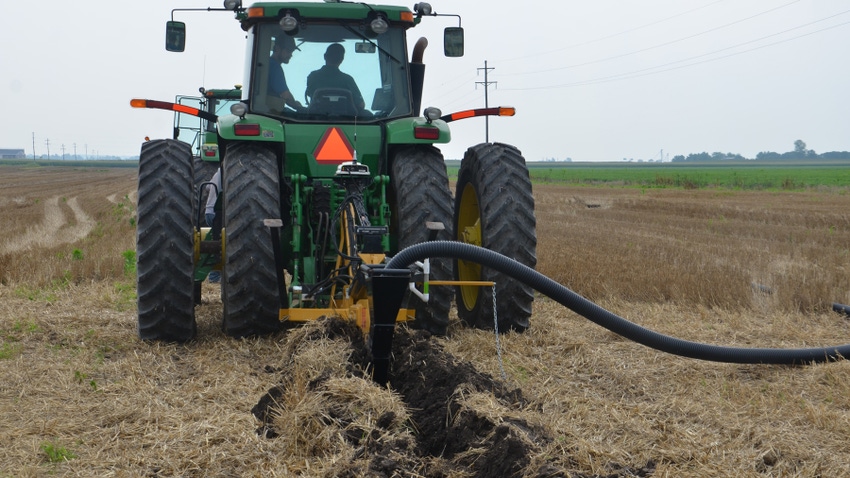May 15, 2023

We farm 360 acres that need tile. The landowner can’t foot the bill. We could do it with our tile plow if he paid for tile. How much should we ask in reduced cash rent to offset our investment? How long should our contract be?
Profit Planners panelists include David Erickson, farmer, Altona, Ill.; Mark Evans, Purdue Extension educator, Putnam County, Ind.; Jim Luzar, retired Purdue Extension educator and landowner, Greencastle, Ind.; and Steve Myers, farm manager with Busey Ag Resources, LeRoy, Ill.
Erickson: So, you want the landowner to invest to hopefully increase yield, but you expect to rent it at a lower rate? Your landowner would be better to avoid the investment. If the tile is really needed, maybe negotiate a longer-term lease, like a five-year lease, with annual adjustments based on market values and actual production.
Evans: I suggest a flexible lease such that the landlord and tenant would mutually benefit from larger yields. Perhaps base cash rent would be a bit lower to help the tenant with risk. Have strong rewards for good years to entice the landlord. Long contracts do not seem wise in the event of death or other major life change for either party.
Instead, amortize tile cost. For example, suppose tile cost $25,000 and amortization was over 10 years and the landlord died after six years. In such case, $25,000 divided by 10 is $2,500 credit per year. With four years left at $2,500 per year, the landlord’s heirs would owe the tenant $10,000.
Luzar: Landlords are reluctant to spend money without some idea of what financial return looks like. Develop a realistic budget of their capital outlay and how they can expect to receive a return on their investment. Discuss it with them. Note the value your installation provides, so the landlord knows what you are contributing.
The landlord may have to change perspective on farm leasing. You will desire a longer-term lease to recoup your machinery and labor charges. If the landlord only wants a short-term lease, create a supplemental contract that provides an amortization, say seven years, for installation cost. Each year you farm the land, a seventh of the cost is “forgiven.”
If the landlord will entertain a long-term lease, reward him with extra rental revenue, but don’t let all economic benefits translate into more rent. Remember, both parties are sharing in this tile investment. The longer-term lease could be indexed to accommodate future changes in the rental market. Consider a flexible cash lease that exhibits a less-aggressive flex mechanism so both parties increase income with improved yields.
The easier investment mechanism may require you to foot the total bill. That may be money you don’t want to spend right now. If it is agreeable, an amortization contract to retire tiling cost is a must for you. Legal counsel is recommended.
Myers: Yes, you can ask for a rent offset for your out-of-pocket labor and installation. If you have such a number, use that as your guide. If not, generate one. I am not an advocate of long-term leases. Consider putting that same labor and installation total on an amortization schedule over five to 10 years.
You May Also Like




